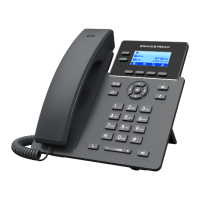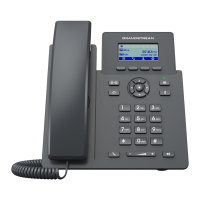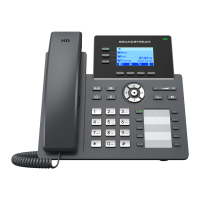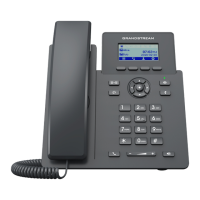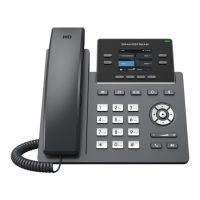Configures the dial plan rule. For syntax and examples, please refer to user
manual for more details.
Dial Plan Rules:
1. Accepted Digits: 1,2,3,4,5,6,7,8,9,0, *, #, A,a,B,b,C,c,D,d;
2. Grammar: x – any digit from 0-9;
3. Grammar: X – any character from 0-9, a-z, A-Z.
a) xx+ - at least 2 digit numbers
b) xx – only 2 digit numbers
c) XX – two characters ( AA, Ab, 1C, f5, 68,…)
d) \t\e\s\t : only string “test” will pass the dial plan check
e) ^ - exclude
f) [3-5] – any digit of 3, 4, or 5
g) [147] – any digit of 1, 4, or 7
h) <2=011> - replace digit 2 with 011 when dialing
i) | - the OR operand
• Example 1: {[369]11 | 1617xxxxxxx}
Allow 311, 611, and 911 or any 11 digit numbers with leading digits 1617;
• Example 2: {^1900x+ | <=1617>xxxxxxx}
Block any number of leading digits 1900 or add prefix 1617 for any dialed 7
digit numbers;
• Example 3: {1xxx[2-9]xxxxxx | <2=011>x+}
Allows any number with leading digit 1 followed by a 3-digit number, followed
by any number between 2 and 9, followed by any 7-digit number OR Allows
any length of numbers with leading digit 2, replacing the 2 with 011 when
dialed.
Example of a simple dial plan used in a Home/Office in the US:

